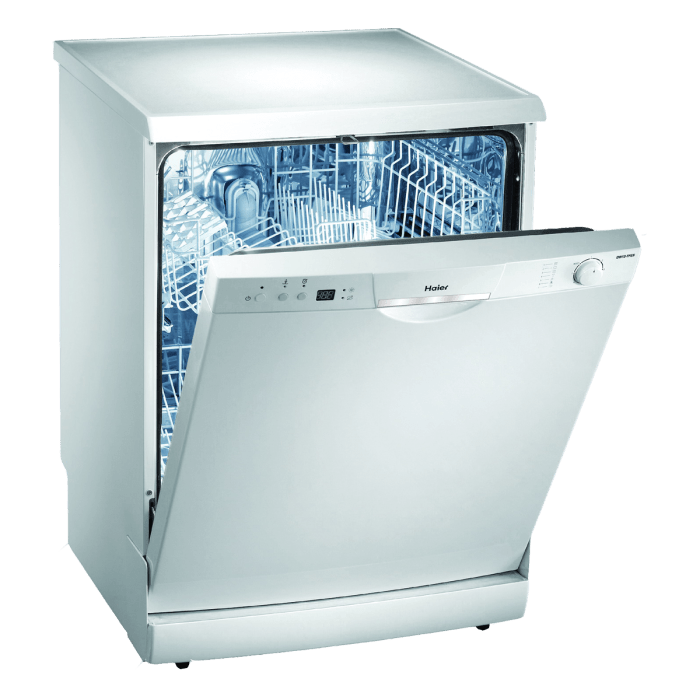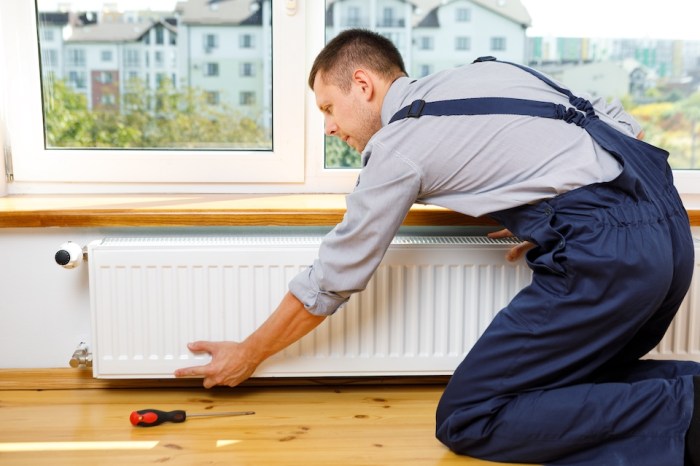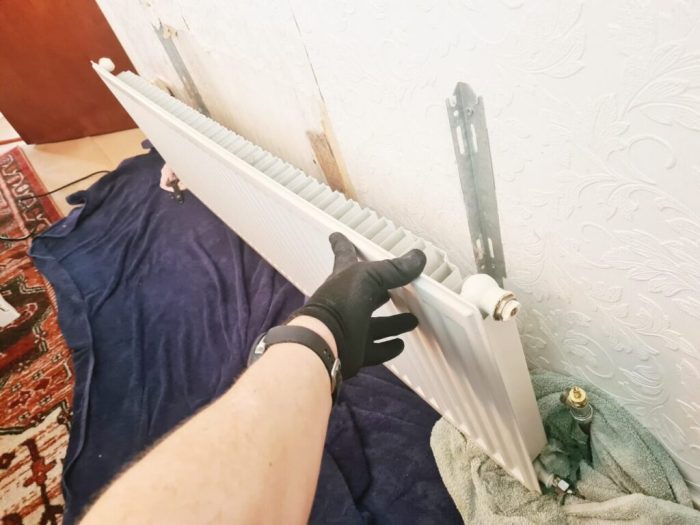Dishwasher Smells Like Sewage – a frustrating problem that can quickly turn a simple dishwashing chore into a plumbing puzzle. This guide delves into the possible causes, from stubborn food debris clogging the system to more serious plumbing issues, and provides actionable troubleshooting steps and cleaning solutions to get your dishwasher smelling fresh again.
From identifying the source of the odor, to fixing potential plumbing problems, understanding how food debris can contribute, and diagnosing dishwasher malfunctions, this comprehensive guide will help you tackle this common household issue. We’ll also cover preventative measures to avoid future unpleasant surprises.
Identifying the Source of the Smell
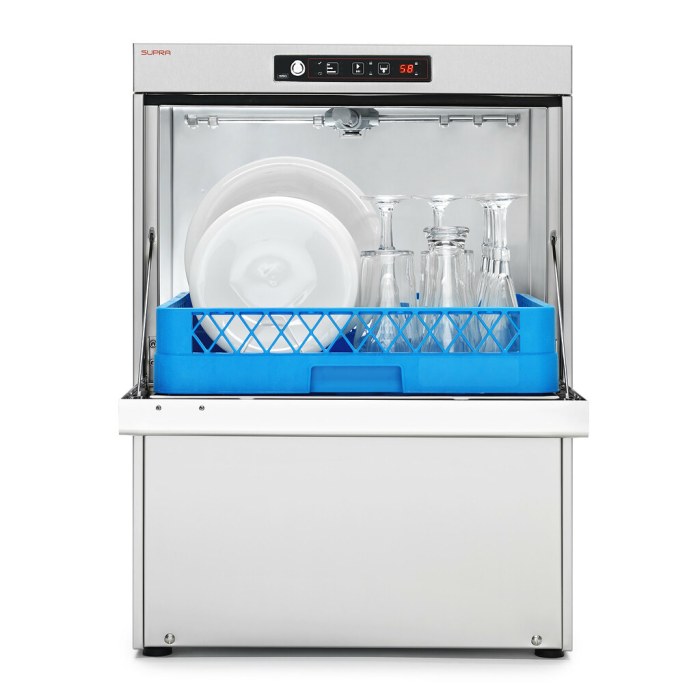
A sewage-like odor emanating from your dishwasher is a frustrating and often perplexing problem. This unpleasant smell can stem from a variety of sources, ranging from simple clogs to more serious appliance malfunctions. Understanding the potential causes is the first step in resolving the issue.Plumbing problems, food debris buildup, and faulty dishwasher components are the most common culprits behind this noxious aroma.
Thorough investigation, often involving visual inspections and a systematic approach, will usually lead to a definitive solution.
Plumbing Issues
Plumbing problems are often overlooked as the cause of a sewage smell in a dishwasher. Incorrect or damaged connections can create a pathway for sewer gases to enter the dishwasher. This usually manifests as a persistent, strong, and foul odor.
- Clogs in the drainpipes leading to or from the dishwasher can prevent proper water drainage, creating a breeding ground for bacteria and gases.
- Leaks in the drain connections or in the pipes themselves allow sewer gases to mix with the dishwasher’s water, leading to a foul smell. These leaks can be small and difficult to detect.
- Improper connections between the dishwasher drain and the plumbing system can cause backflow, allowing sewer gases to enter the dishwasher and create a sewage-like odor.
Food Debris
Food particles, especially those with high protein content, can decompose in the dishwasher, producing unpleasant odors, including those reminiscent of sewage. Prompt and proper cleaning is essential to prevent this issue.
My dishwasher is suddenly emitting a truly awful sewage smell. It’s driving me nuts! I’ve tried everything – vinegar rinses, baking soda cleanses, even a frantic Google search. Apparently, some plumbing experts recommend checking out big baby ghandi no1 2 look up 2 for a completely different perspective on resolving plumbing issues. Hopefully, that’s not the problem, but I’m starting to wonder if my entire kitchen is about to become a biohazard zone because of this persistent sewage smell from my dishwasher.
- Accumulated food debris, especially in the filter, trap, or drain lines, can decompose and create a foul odor that permeates the dishwasher and surrounding area.
- Hard-to-dissolve food particles, like bones, rice, or starchy residues, can trap moisture and create an ideal environment for bacterial growth, leading to a sewage-like odor.
- Cleaning methods that don’t adequately remove food particles will contribute to a persistent odor. This includes simply rinsing the dishwasher or using a weak cleaning solution.
Dishwasher Malfunctions
Malfunctions in the dishwasher’s internal components can also cause a sewage-like smell. These malfunctions can result in water pooling or improper drainage, which further creates a breeding ground for bacteria and gases.
- Malfunctioning pumps, such as a clogged or damaged pump, can prevent the proper draining of water and create a buildup of water, leading to decomposition and a sewage-like odor.
- Clogged filters can restrict the flow of water, causing water to remain in the dishwasher and leading to a buildup of bacteria and a sewage-like smell.
- Damaged or deteriorated seals around the door or drain can allow sewer gases to enter the dishwasher, causing the characteristic sewage odor.
Comparison Table
| Potential Cause | Symptoms | Typical Fixes |
|---|---|---|
| Plumbing Issues | Persistent, strong sewage-like odor; water backing up; visible leaks; slow draining | Check and repair drain connections; fix leaks; clear clogs in drainpipes; contact a plumber |
| Food Debris | Occasional or persistent, less intense sewage-like odor; visible food particles in the dishwasher; buildup in the filter or drain | Thoroughly clean the dishwasher; remove food debris; use a dishwasher cleaner; check and clean the filter regularly |
| Dishwasher Malfunctions | Persistent sewage-like odor; water pooling; unusual noises; slow draining; leaks | Inspect and replace faulty pumps; clean or replace filters; repair or replace damaged seals; contact a technician for more complex issues |
Troubleshooting the Problem
Unpleasant sewage smells emanating from your dishwasher can be a frustrating and perplexing issue. Before diving into complex fixes, a systematic approach is crucial. Pinpointing the exact source is key to effective troubleshooting and a swift resolution. This process involves a combination of visual inspections, smell tests, and listening for unusual sounds.Understanding the potential causes of the odor is the first step in a successful troubleshooting strategy.
These causes can range from simple clogs to more intricate plumbing problems. Carefully examining each step of the process can help pinpoint the root of the issue and avoid unnecessary replacements.
Checking for Dishwasher Drain Clogs
Proper drain function is essential for a dishwasher’s efficient operation. A clogged drain can lead to water buildup and the subsequent development of foul odors.
- First, locate the dishwasher’s drain hose. This is usually a flexible tube connected to the drainpipe.
- Carefully inspect the drain hose for any blockages, kinks, or obstructions. A simple visual check can reveal a blockage, such as food debris or other foreign material.
- If a blockage is found, use a drain snake or a plumber’s snake to clear the clog. Alternatively, carefully remove any visible obstructions from the drain hose.
- Check the dishwasher’s drain pump filter for any trapped debris. Removing and cleaning the filter may resolve the issue.
- Finally, check the drainpipe connected to the dishwasher. Make sure there are no clogs in the drainpipe itself. This might require using a plumbing snake or other tools.
Inspecting Dishwasher Internal Components
The internal workings of a dishwasher can also be a source of the sewage smell.
- Carefully inspect the dishwasher’s interior for any signs of leaks or standing water. Look for water stains, discoloration, or dampness around the seal, the bottom of the unit, or other components.
- Verify that the dishwasher’s door seals properly. A damaged or improperly seated door seal can allow odors to enter and may lead to moisture buildup and subsequent odors.
- Examine the dishwasher’s spray arms and filter for any clogs or debris. Clogged spray arms and filters can cause inefficient cleaning and result in lingering odors.
- Check the dishwasher’s pump for any blockages. If the pump is not functioning correctly, water can back up, leading to the development of a sewage smell.
Comparing Diagnostic Approaches
Different diagnostic methods can help determine the source of the problem.
- Visual inspection is an initial step to quickly identify obvious issues like clogs or leaks. Look for visible signs of debris in the drain hose or standing water in the dishwasher.
- Smell tests, while subjective, can help pinpoint the location of the odor. Check the drain hose, the interior of the dishwasher, and the surrounding plumbing for the strongest odor.
- Listening for unusual sounds can also provide clues. A gurgling sound coming from the dishwasher or the drainpipe might indicate a blockage.
Troubleshooting Flowchart
The following flowchart illustrates the troubleshooting process, outlining potential outcomes and next steps. A visual representation of the steps helps guide users through the problem-solving process.
| Step | Action | Outcome | Next Steps |
|---|---|---|---|
| 1 | Check dishwasher drain hose and filter | Clog found | Clear clog; if odor persists, proceed to next step |
| 2 | Inspect internal components for leaks or blockages | Leak or blockage found | Repair or replace component; if odor persists, proceed to next step |
| 3 | Check surrounding plumbing for clogs | Clog found | Clear clog; if odor persists, contact a plumber |
| 4 | No visible issues found | Contact a professional plumber |
Cleaning and Maintenance Solutions
Tackling a dishwasher that smells like sewage requires a multifaceted approach. A thorough cleaning, focusing on potential sources of odor buildup, is crucial. This involves not just wiping down the exterior, but also meticulously addressing the inner workings of the appliance. The following sections detail various cleaning methods, preventative maintenance, and essential supplies.Understanding the root cause is vital for effective cleaning.
Sewage smells often stem from food particles, grease, and mineral deposits accumulating in the dishwasher’s components. This buildup can create an anaerobic environment, fostering the growth of odor-causing bacteria. Addressing these issues directly is key to eliminating the smell and preventing future problems.
Dishwasher Cleaning Methods
Effective dishwasher cleaning involves a combination of methods, focusing on different parts of the appliance. Proper cleaning not only eliminates the current smell but also prevents future odors by removing the buildup that fosters bacteria growth. Regular cleaning is crucial for maintaining a fresh-smelling appliance.
- Baking Soda and Vinegar Soak: Dissolve one cup of baking soda and one cup of white vinegar in a bowl and pour it into the dishwasher. Run a hot water cycle without any dishes. This method effectively cuts through grease and grime, neutralizing odors. It’s a gentle approach that won’t harm the dishwasher’s components.
- Commercial Dishwasher Cleaners: Specialized dishwasher cleaners are formulated to tackle tough stains and odors. Follow the manufacturer’s instructions carefully. These products often contain enzymes that target and break down food particles and grease effectively.
- Hot Water Cycles: Running a hot water cycle with an empty dishwasher can help to remove residual food particles and loosen any mineral deposits. Regularly running hot water cycles, even without dishes, is a simple yet effective preventative measure.
Drain Pump and Filter Cleaning
The dishwasher’s drain pump and filter are crucial for efficient water drainage. Blockages in these areas can lead to water pooling and subsequent odor buildup. Regular cleaning is essential to prevent this.
- Drain Pump Cleaning: Remove any visible food particles or debris from the drain pump area. Use a small brush or a wire to dislodge clogs. Avoid using harsh chemicals or abrasive materials that could damage the pump. Inspect for any loose or damaged components.
- Filter Cleaning: The filter typically sits at the bottom of the dishwasher. Remove it and thoroughly clean it with warm, soapy water. Ensure the filter is properly installed before running the dishwasher again.
Interior Cleaning
Maintaining the interior of the dishwasher is vital for preventing odor buildup. This includes cleaning the spray arms and the tub itself.
- Spray Arm Cleaning: Inspect the spray arms for any food particles or mineral deposits. Use a brush or a small tool to remove clogs. A regular cleaning of the spray arms ensures efficient water distribution and prevents clogging.
- Tub Cleaning: Use a sponge or a soft brush to scrub the inside of the dishwasher tub, paying close attention to any areas where food particles may have accumulated. Use a mild dish soap or a cleaning solution for best results. Regular cleaning will prevent the buildup of food particles and grease.
Preventative Maintenance
Implementing preventative measures is crucial to avoid future sewage odors.
My dishwasher is currently emitting a truly awful sewage smell. It’s driving me absolutely bonkers! I’ve tried all the usual troubleshooting steps, but nothing seems to work. Maybe I need to delve deeper into the plumbing mysteries, or perhaps I should take a page from the brilliant mind of tate mcrae think later. tate mcrae think later might have some surprisingly practical insights on problem-solving.
Regardless, this persistent sewage smell is a serious issue and needs a swift resolution!
- Regular Cleaning Schedule: Establish a regular cleaning schedule for your dishwasher. Even a quick wipe-down after each use can prevent buildup.
- Proper Loading Technique: Ensure that dishes are properly loaded to allow for adequate water circulation and spray arm coverage.
- Checking for Leaks: Regularly check for leaks around the dishwasher. Leaks can lead to water pooling and potential odor problems.
Essential Cleaning Supplies
Here’s a list of necessary cleaning supplies:
| Item | Description |
|---|---|
| Baking Soda | Neutralizes odors and helps to loosen grime. |
| White Vinegar | Effective in cutting through grease and neutralizing odors. |
| Dish Soap | Gentle detergent for cleaning the tub and spray arms. |
| Soft-bristled Brush | Ideal for scrubbing the spray arms and the tub. |
| Small Brush or Wire | Used for cleaning the drain pump area. |
| Sponge | For cleaning the tub and other surfaces. |
Preventative Measures and Maintenance: Dishwasher Smells Like Sewage
A lingering smell of sewage in your dishwasher can be frustrating and disruptive. Beyond addressing immediate issues, proactive measures can significantly reduce the risk of future odor problems. Implementing these preventative strategies will save you time, effort, and potential plumbing problems.Proper food disposal practices play a crucial role in preventing dishwasher odors. Food particles that are not properly disposed of can decompose and create foul smells.
This includes ensuring that all food scraps are removed from dishes before loading them into the dishwasher. Using a strainer or a mesh basket can further help prevent food from clogging the drain.
Food Disposal Practices
Preventing food from becoming trapped in the dishwasher is key to preventing odors. Carefully inspect dishes before loading to ensure no food particles remain. Using a strainer or a mesh basket to catch food debris before loading will prevent clogs and reduce the chance of decomposition. Discarding food scraps immediately after a meal is crucial for minimizing odor-causing bacteria.
Dishwasher Unloading and Cleaning
Regular unloading and cleaning of the dishwasher is essential for maintaining its cleanliness and preventing odors. Leaving dirty dishes in the dishwasher for extended periods can lead to the growth of bacteria and the release of unpleasant smells.Unloading the dishwasher immediately after the cycle is completed is crucial. This prevents food particles and water from sitting and decaying, which is a major contributor to odors.
Wipe down the interior of the dishwasher, including the door, the bottom, and the spray arms, after unloading. This simple step helps to prevent the buildup of food residue and grime.
Recommended Cleaning Solutions
Regular cleaning of the dishwasher with appropriate solutions is vital for preventing odors. Various cleaning solutions can effectively eliminate odors and maintain the dishwasher’s hygiene.
My dishwasher smells like sewage, and frankly, it’s making me a little uneasy. Is this a sign of a deeper problem? Maybe I’m just being overly sensitive, but sometimes these seemingly mundane household issues can mirror more complex emotional patterns. It’s worth considering the concept of trauma bonding, where a person stays in a toxic situation despite the negative impacts.
Learning to identify these patterns can be crucial for moving forward, and I’ve found some helpful insights in this article on 10 Signs of Trauma Bonding. Maybe this persistent dishwasher stink is a symptom of a deeper, more intricate problem in my life. Either way, I’m going to need to figure this out, one stinky dish at a time.
- Baking Soda: Sprinkle a half cup of baking soda on the bottom of the dishwasher. Run a short, empty cycle to help remove odors and food particles. This is a gentle and effective method for cleaning.
- White Vinegar: Pour one cup of white vinegar into the dishwasher’s dispenser. Run a short, empty cycle. The acidity of vinegar helps to dissolve mineral deposits and eliminate odors.
- Dish Soap: A regular dish soap solution, combined with a cleaning cycle, is also a very effective method to eliminate lingering food particles.
These solutions, when used regularly, contribute to maintaining a fresh and clean dishwasher environment, preventing future odor problems.
Regular Maintenance Schedule
Establishing a regular maintenance schedule is crucial for maintaining the dishwasher’s optimal performance and preventing unpleasant odors. This includes a combination of cleaning and inspecting various components.
- Monthly Cleaning: Dedicate a monthly cleaning session to the dishwasher. Use baking soda or vinegar, or a combination of both, to remove food particles, mineral deposits, and grime. This should include the spray arms, filter, and any other removable parts.
- Quarterly Inspection: Every three months, inspect the dishwasher for any clogs or blockages in the drain. Ensure the drain is clear and free of debris. This prevents build-up that could lead to odors and malfunctions.
These periodic checks ensure the dishwasher functions effectively and prevents the accumulation of issues that may lead to unpleasant odors.
Professional Help
Sometimes, even with diligent troubleshooting and cleaning, the sewage smell from your dishwasher persists. This often signals a deeper problem that requires specialized knowledge and tools. Knowing when to call a professional is crucial to preventing further damage and ensuring a swift resolution.Professional help is essential when DIY efforts prove ineffective or when the source of the smell is unclear, or if there are signs of a larger plumbing issue.
A plumber or appliance repair technician possesses the expertise and equipment to pinpoint the root cause and implement appropriate solutions.
When to Contact a Plumber or Technician, Dishwasher Smells Like Sewage
A persistent sewage smell, despite thorough cleaning, indicates a potential plumbing problem beyond your capabilities. This includes blocked drains, faulty connections, or issues with the dishwasher’s plumbing components. If you notice any visible leaks, unusual noises from the plumbing system, or if the smell worsens despite your efforts, professional intervention is strongly recommended.
Information for the Technician
Providing accurate information to the technician is critical for a rapid and effective diagnosis. A clear description of the problem significantly aids the technician in identifying the root cause.
Accurate Descriptions of the Problem
Precise descriptions of the problem are vital. Vague statements like “It smells bad” won’t be helpful. Instead, focus on specific details, including the location of the smell (e.g., near the drain, inside the dishwasher), the intensity of the smell (e.g., faint, overpowering), and when the smell occurs (e.g., after every load, only sometimes). Describing the smell as “like sewage” is helpful.
Adding details like “the smell is stronger after using a specific detergent” or “the smell appears immediately after the dishwasher finishes a cycle” helps narrow down the problem.
Clear and Concise Communication Examples
Here are examples of clear and concise communication when describing the sewage smell issue to a professional:
- “My dishwasher has a strong sewage-like smell after each cycle. I’ve already cleaned the dishwasher and the drain, but the smell persists. The smell is concentrated near the drain and the dishwasher door.”
- “The dishwasher is emitting a foul sewage odor, particularly noticeable after I run a load of dishes. I’ve tried various cleaning solutions, but the smell persists. The smell is significantly worse after running a specific brand of detergent.”
- “I’m experiencing a persistent sewage smell coming from my dishwasher, which started about a week ago. I’ve tried the standard cleaning methods, but the smell remains. It is consistently strong, and it is most noticeable immediately after the dishwasher finishes its cycle.”
Epilogue
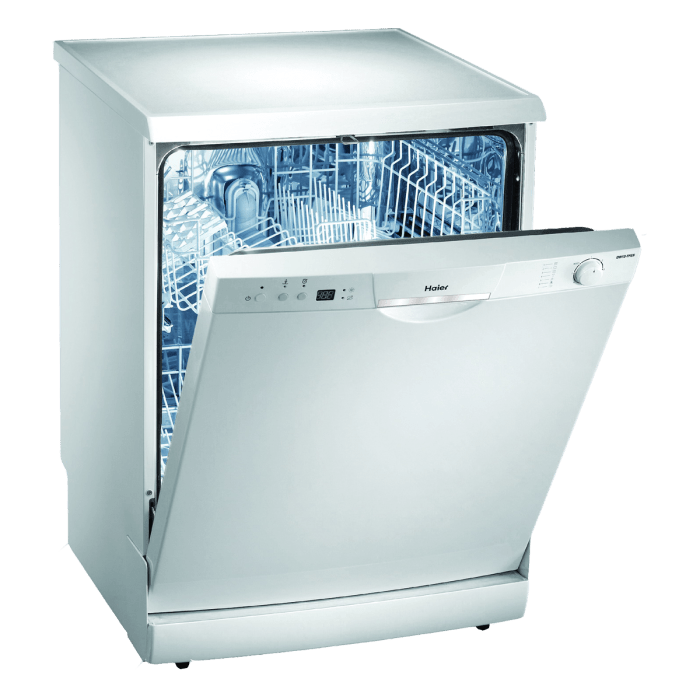
So, your dishwasher is emitting a sewage-like odor? This guide armed you with the knowledge to pinpoint the culprit, whether it’s a clogged drain, a malfunctioning pump, or simply a build-up of food debris. With the troubleshooting steps and cleaning solutions provided, you’re well-equipped to restore your dishwasher to its former glory and prevent future odors. If the problem persists, remember to seek professional help.
